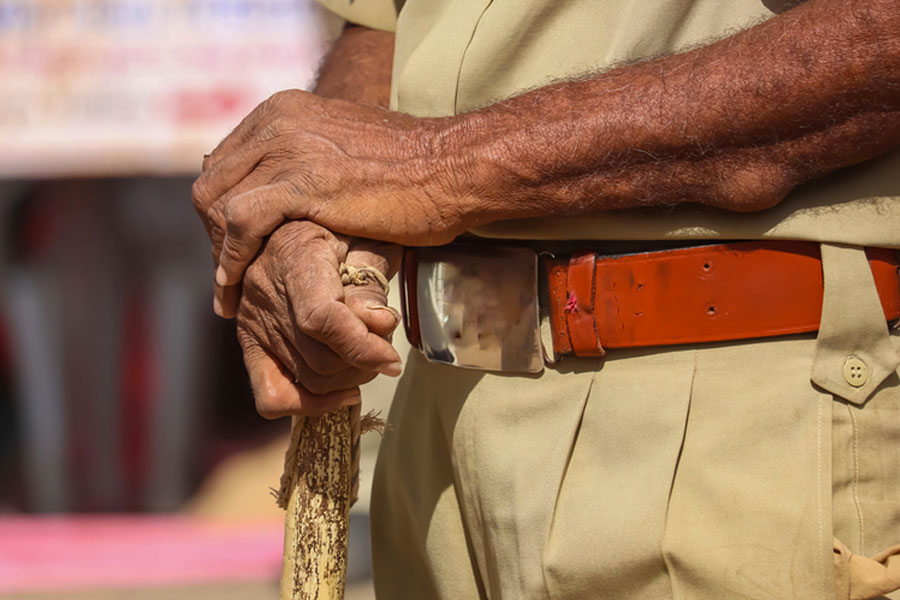

Okay, confession time: The first Agatha Christie I read was The Dumb Witness and frankly, it left me underwhelmed. Perhaps the timing wasn’t right. But for close to decades, I didn’t pick up another book by her thanks to my pig-headed tendency of not giving authors a second chance (now, of course, the thought of being at the receiving end of such unforgiving cruelty sends shivers down my spine).
But age and curiosity won. Why was this little old English lady called the Queen of Crime? Why are so many people into a funny Belgian detective with a Dali-esque moustache? Why is an old spinster considered one of the best detectives in English fiction? And I picked up her books a few years ago, as I was writing my first thriller, Swear You Won’t Tell? I started with 4.50 From Paddington featuring Ms Marple and breezed through Elephants Can Remember, a Hercules Poirot case. Both were great reads but it was when I started reading And Then There Were None, that I was truly riveted.
Ten strangers brought on false pretexts to an isolated island by an unknown person and lured to their deaths? Oooh, gimme, gimme. The premise hooked me long before I’d read the first page and the rest of the book just reeled me in with the suspense. Why are these ten people here? Who is this U.N. Owen? Why on earth would Ms Christie use such a silly pun?
But within the first few pages, the first of those questions was answered. And I wrote down my first note-to-self as an author: answer a question in a way that spawns more questions. The ten strangers were summoned because they’d gotten away with murder in the past and this was Judgement Day. Each of the ten characters — fleshed out, distinctive and with their own strengths, weaknesses and secrets — kept me guessing. And just as I felt like sympathising with one,Ms Christie bumped him or her off. (So now we know where George R.R. Martin got his Wheel of Misfortune from.)

Each death took me steeper on the incline of the emotional roller-coaster, without letting me take my eye off the thoughtfully scattered theatrical touches: the ten figurines which are found broken one by one, as each guest died, or the creepy rhyme that is framed — framed! — in each guest’s room. It was a masterclass on how with the right placement, ordinary things can create suspense and build tension, perhaps far more so than a garden variety psychopath going berserk with a hacksaw. It also served as my second note-to-self: the systematic tick of a time bomb is a greater torture than its explosion.
In fact, the entire atmosphere the book creates is of well-planned malice and it is this planning and attention to detail that creates in the reader’s mind a picture of the homicidal mastermind behind the scene. I think U.N. Owen (aside from that silly pun of a name) is one of the most clinical and calculating murderers I’ve seen in crime fiction. S/he has thought of everything, planned it to perfection, to the extent that the guests on the island are mere puppets marching to their deaths, in this elaborate game of crime and punishment. And the sheer effort s/he puts into planning and killing the guests convinces us that what we have at hand is a person far more dangerous than the average murderer.
In my opinion, the most beguiling character in a thriller is the bad guy/ villain / antagonist / person with an axe to grind. Says a lot about me, I know, but they are the guys committing the crime and every crime has a motive and every motive satisfies that human urge to ask ‘why?’ I hate it when someone goes batshit crazy for no reason other than ‘hey man, I had a gun, so boom’. That’s not how sane human beings operate. In fact, except for the Joker, that’s not how insane human beings operate either. In that respect, U.N. Owen with his God-complex was an important lesson in the mind of a criminal: even a multiple murderer believes that what s/he’s doing is for a real, justifiable reason. Put another way, every villain is the hero of their own story.
The lesson has stayed with me, long after my book came out and I set about plotting the next. So did the others in the book, lessons life teaches us as people but we tend to forget as writers: sometimes people lie, sometimes they withhold information, some people have trouble trusting others and what is mere inconsideration for one man is inhumanity for another. I look back now to the eye-rolling teenager I was, dismissing Dame Christie’s books as being too simplistic, and I’m tempted to reach back in time and whack that girl around the head. Shush, child, I want to say. Spinning mysteries is going to be an education for you, one day. And you better show some respect for the headmistress of that particular school.
(Vedashree Khambete Sharma is the author of Swear You Won’t Tell?)

I visited Torquay, in Devon (English Riviera), a while back with the sole intention: to see the paradise where the undisputed queen of crime lived for most of her life and wrote over 80 crime novels. Agatha Christie is the number one author of books of any kind, in any genre, ever (along with William Shakespeare; Christie’s work has been translated into more than 100 languages).
One of my favourite Christie books is Murder on the Orient Express (also published as Murder in the Calais Coach in America) which was first published in 1934. The story was inspired by a true case of kidnapping, which Christie referred to, albeit it was fictionalised.
The essence of the story is a Mr Ratchett who is murdered on the train. All 12 travellers in the coach (besides Hercule Poirot) had the opportunity to kill him, and considering that Mr Ratchett was involved in a child-abduction-murder case, he had given the entire world a reason to do so.
It’s been so ingeniously plotted with clever twists and turns that it wouldn’t be a hyperbole to say that Murder on the Orient Express literally defined the whodunit genre. It is often referred to as one of the greatest surprise endings in the genre. While in other mysteries (including the others written by Agatha Christie), there is always a possibility some readers can guess — by the simple method of elimination or by sheer chance — who the murderer is. Murder on the Orient Express removes that element of chance. While all the other 12 co-passengers in the coach are suspects, it is impossible for any reader to guess how all the suspects colluded to kill Ratchett. If any first-time reader boasts they had guessed it, I suggest you take their word, on anything, with a pinch of salt from now on.
It is no wonder Murder on the Orient Express is one of Christie’s largest selling books —it’s been adapted into films, television series, radio drama and even a computer game.
I first read Murder on the Orient Express when I was in school. The edition I bought then included a diagram of the train, which I still remember had influenced my decision to pick this one as my first Agatha Christie book from the limited pocket money I received at the time. Although bought for that unique frivolity, it’s a decision I’ve never regretted.

In generic terms, Agatha Christie has inspired me like she’s inspired a generation of crime authors, and will continue to do so in future. I simply marvel at her brilliance. Being an author and having spoken to some authors personally, I am aware that it takes more or less a year to finish a manuscript. Then it, obviously, needs editing, polishing, re-editing, before it is in any shape or form to be sent to an agent or publisher.
Hence, even if you are not a fan of hers, or not impressed with her style of writing, you have to acknowledge her sheer genius to have come up with so many plots, and then put them on paper brilliantly. Good enough for four billion people to buy them — and all this with no computers to work on, back in the day.
More specifically, in Murder on the Orient Express, the tenth outing of Hercule Poirot, Poirot foils what would have, otherwise, been a perfect murder. Murder on the Orient Express inspired my latest book, The Mogul. For one, it’s a story about a perfect murder, and two it is inspired by a true event, which took the legal community around the world by surprise. But, the inspiration ends there.
The influence of Murder on the Orient Express on me has been immense. It isn’t that I make a conscious effort to replicate, but the impression this book has made on my mind is subliminally reflected in some of my work. For example, in my forthcoming book, The Heist Artist I’ve included a map of the escape route the protagonists take. Agatha Christie’s Murder on the Orient Express has etched into my mind that the true genius of storytelling is to make the reader imagine the scene, see the location, draw their own conclusions. The idea of including a map of the escape route after a heist (much like the diagram of the railway coach in Murder on the Orient Express) is to transport the reader into the scene, to get their pulse racing, to feel the tension and the thrill.
Like I said, I’ve been influenced and inspired; I emulate subconsciously. I’ve been a fan of Agatha Christie for over three decades now. And the best part is children, even today, love to read the books penned by her almost a century ago.
(Vish Dhamija is the author of The Mogul and Unlawful Justice)









